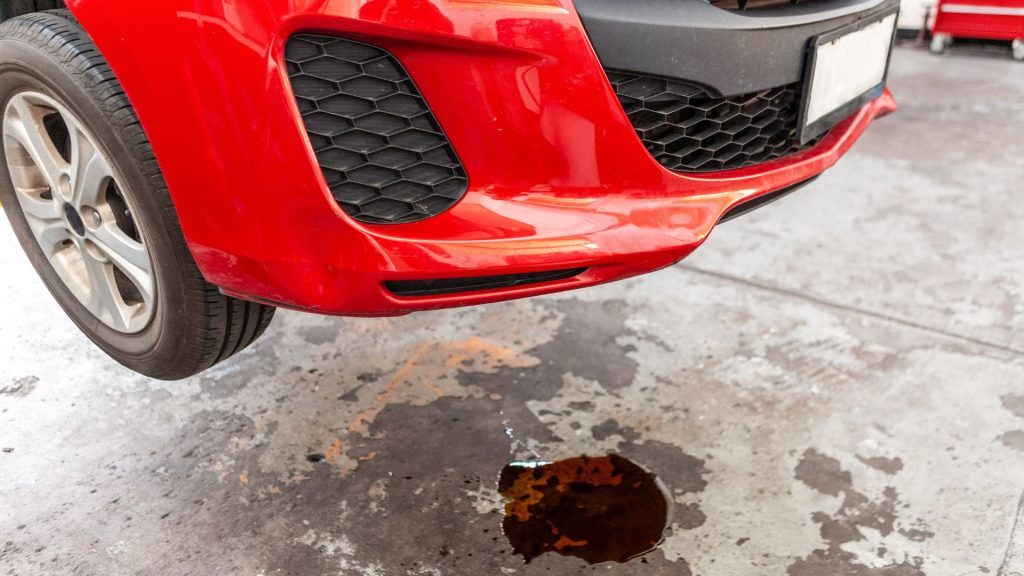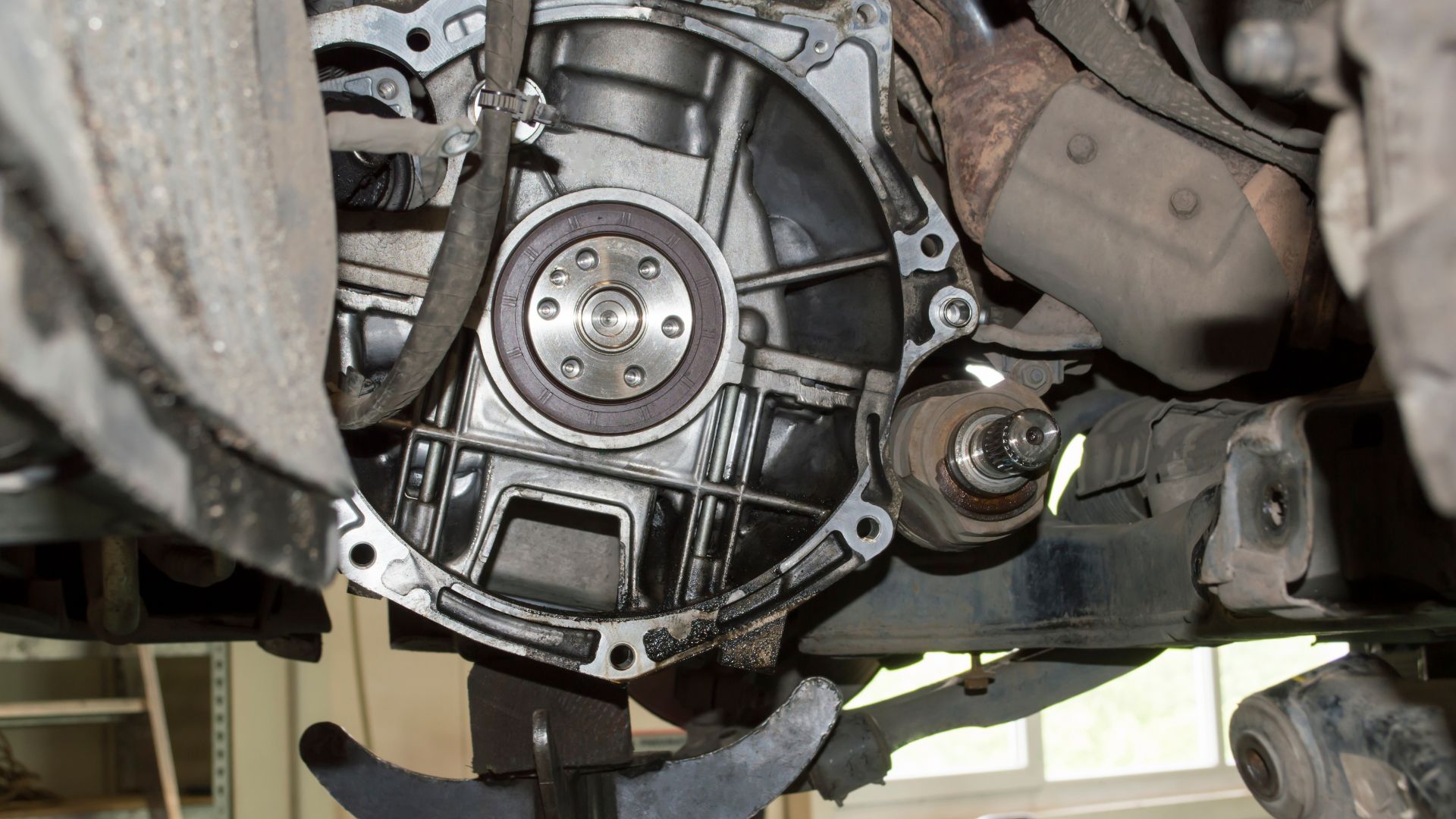Some people thought it made sense to replace the seal. Others said the opposite. But why is that? You can blame the seal’s location (between the engine and crankshaft). The experts at Bar’s Leaks are convinced that manufacturers originally wanted rear seals to last as long as the vehicle.
In other words, they did not want drivers to replace these items every few years because doing so requires several hours of hard work. That matters because many mechanics charge by the hour. The more time a job takes, the more money you will pay.
Additionally, a dead rear main seal won’t necessarily prevent the car from moving. Yes, it creates an oil leak. But you can still drive the vehicle for weeks without fixing or replacing the broken seal, especially if you remember to top up the oil levels.
Therefore, many consumers are hesitant to commit to a rear main seal repair or replacement. Some drivers avoid this outcome by replacing the rear main seal whenever their mechanic performs a procedure that requires them to remove the transmission.
Replacing the rear seal during such instances, regardless of whether or not it’s damaged, will save time and money in the future. But if the seal is already broken, and you’re trying to determine whether the cost of repair and replacement is worth it, the factors covered below will shape your decision.
The Importance Of A Rear Main Seal In The Proper Functioning Of Your Engine
The engine uses an explosive process to generate energy. The energy it produces turns the crankshaft, which, in turn, sends the engine’s power to the transmission. This allows the transmission to move the wheels.
The rear main seal sits between the crankshaft and transmission, forming a tight connection that prevents the oil from leaking. The crankshaft carries a heavy load because it connects to the pistons, flywheel, and pulleys.
Manufacturers add main bearings that reduce the strain on the crankshaft. They also keep the crankshaft adequately lubricated by allowing the oil to flow to this component. The rear main seal will contain this oil. When you disassemble the transmission, you will see one of the following:
1). One Piece
Modern vehicles have a one-piece rear main seal. This type won’t fit in older cars because their crankshafts can’t accommodate this design. Installing the one-piece seal in an old vehicle means replacing the crankshaft.
2). Rope
Some people call them wick seals. They can contend with a crankshaft’s intense rotations and the friction temperature fluctuations attract. Finding a decent wick seal today is easier said than done because the designs have changed dramatically in response to environmental regulations.
Manufacturers don’t have the option of using materials like asbestos, which is why some of them cut corners. The result is a cheaper, less reliable product. Unless you have a reputable supplier, wick seals are not a good idea these days. If your car has one, use oil to prevent it from drying.
3). Neoprene
You prevent oil leaks by fitting this rubbery lip-shaped seal in one direction. Neoprene and rope seals have similar weaknesses; you can’t trust them to prevent stray oil in modern cars. Wick seals should give you pause because they shrink and expand in cold and hot conditions.
The Potential Consequences Of Not Fixing A Rear Main Seal
Some people ignore this component because you can drive a car with a damaged rear main seal. Yes, the oil will leak, but not at a rapid rate that immediately kills the vehicle. In fact, it may take a few weeks before you notice the oil puddles in your driveway.

But does that mean you can ignore this issue? Not necessarily. The following problems will eventually arise:
- Why don’t you notice these oil leaks when they first occur? Because the oil will wash over other components in the vicinity, including the hoses and wires. But why is that bad? Because oil is a fire hazard. The heat from the exhaust pipe will ignite it. If you can avoid the fire, the smoke and unpleasant smells from the hood will frustrate you.
- Oil leaks are costly because they compel you to buy oil again and again. After all, you can’t drive without oil. Once the leak depletes the reservoir, you must replenish it.
- A broken rear main seal will make a mess because of all the oil puddles and stains it frequently leaves on your driveway.
- The ‘Check Oil’ light will become a nuisance because it will keep coming on.
- Oil can lead to corrosion when it sprays the undercarriage, causing a buildup of dust and dirt.
- A leak can cause slipping in cars with a manual transmission if the oil reaches the clutch.
- A vehicle’s performance will deteriorate because of low oil levels.
Factors To Consider When Deciding Whether To Invest In Rear Main Seal Repair
Does it make sense to repair or replace a rear main seal? Your decision will depend on the following factors:
1). Cost of Repairs
You can get a new rear main seal for $50 or less. However, you may spend $1000 overall once you include the labor fees. The Cost Guys expect the final figure to go as high as $2000. Why? Because fixing the rear main seal means removing the transmission.
The rates mechanics charge in your area will drastically impact your expenses. The higher the labor fees, the more money you will spend.
2). The Condition Of The Vehicle
Selling a car just because it needs a new rear main seal sounds irrational. After all, you can get a replacement for $50 or less. But what if replacing the seal means paying $2000? Now you must consider your vehicle’s value.
A car in an unrepaired condition isn’t quite as worthless as people think. You can find a variety of buyers if you check websites like eBay. Workshops may buy the vehicle because they need to strip it for parts.
This decision is easier to make if your car breaks down frequently and struggles with many malfunctions. In that case, fixing the rear main seal is a waste of money.
3). The Age Of The Car
The age and condition of the vehicle go hand in hand. It doesn’t makes sense to spend $1000 or more on a new rear main seal in an older vehicle unless it’s a priceless antique. Consult an expert. They may determine that the older car’s value exceeds that of a new car once you add the repair costs. In that case, forget about the rear main seal.
Sell the vehicle, add the money you would have spent on a replacement rear seal, and buy a new car.
4). The Vehicle Model
Cost Hack has a table showing the cost of replacing the rear main seal in different vehicle models. While a Cadillac SRX costs $999 to $1075, you will spend $2,150 to $2,230 for similar repairs in an Audi A4. The model matters for various reasons:
- The complexity changes. Some vehicles require more time to disassemble. You have more parts to remove.
- Some models have rare replacement parts that are more difficult to access. If your mechanic must import the replacement parts from abroad, you will spend more money.
- The complexity may compel you to hire specialists with higher hourly rates.
The repair costs may skyrocket if the faulty seal introduces a defect in the crankshaft. The more parts you must replace, the more money you will spend.
Comparing The Cost Of Rear Main Seal Repair To The Cost Of A New Car Or Other Options, Such As Selling Or Trading In Your Car
According to Clark.com, a new car in the United States will cost you $48,000. Drivers that own a $48,000 car can afford to spend $2,000 on a new rear main seal.
But what about a used car? It depends on the make, model, and age. A vehicle that costs you a few thousand dollars isn’t worth fixing if it means paying $1,000 or more for a new seal, especially if the value of the car plus the cost of repairs gets you a new vehicle.
The internet is full of people willing to pay a decent amount for a vehicle that needs repairs. Check resources like Craigslist. You can also post an ad in your local newspaper. Many drivers will trade in their cars.
This is where you give a dealer your old car, and they give you a new car. If the new vehicle has a lower value than the old car, the dealer will pay you the balance. If it’s the reverse, you pay the balance to the dealer.
The Potential Benefits of Investing In Rear Main Seal Repair
- Fixing the seal as soon as possible reduces the money you spend on oil every month.
- You will extend the vehicle’s life. Keep in mind that leaking oil reduces lubrication and lowers the vehicle’s performance. It can also start a fire.
- Fixing the seal protects the engine and its moving parts from harm. Preventing unnecessary oil leaks reduces the rate of wear and tear.
- You will prevent corrosion.
While you can drive a car with a ruined rear main seal, doing so exposes you to costly repairs later on. You can lower or even avoid those costs by repairing or replacing the seal as soon as possible.
How To Repair Rear Main Seal?
It depends on what you’re trying to do. Has the seal shrunk? Is it slightly deformed? Ask a dealership or mechanic to recommend a sealer. Some sealants will clog leaks. Others will restore the seal.
For example, the Blue Devil Rear Main Sealer can fix drying, cracking, and shrinking in a seal. But if the seal is beyond repair, you must replace it, a process that involves the following:
- Disconnect the battery starting with the negative terminal.
- Use a jack to lift the car. This allows you to inspect the undercarriage, confirming that you have a leak in the rear seal.
- Take the transmission out.
- Vehicles with manual transmissions have a clutch and flywheel that must come out. If yours has an automatic transmission, take the flex plate out.
- Remove the bolts holding the rear crankshaft seal housing before taking it out.
- Once you have access to the rear seal, pry it out.
- Ensure the new seal has the same inner and outer dimensions as the old one before installing it.
Watch this video to know more in detail

